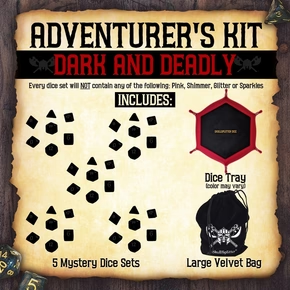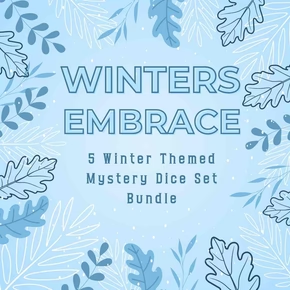
Feywild 5e for D&D 5e
Table of Contents:
Feywild 5e
We’re All Mad Here
You lose your way in the woods and find a path through a willow tree arch you’ve never seen before. The path twists and turns through ever-more vibrant old groves and flower fields and you spot a young girl. She giggles as she takes your hand and whisks you away into a courtyard gala where you dance and sing amidst what seems like hundreds of smiling faces. The days and hours blend into a colorful haze before eventually you wander home away from the fop and fey only to find your loved ones old and tired from all the years they spent without you. You’ve just wandered in and out of the feywild, a chaotic and whimsical realm where logic has little meaning and emotion shapes reality. Grab a cup of tea and don’t give any strange fairies your name as we go through everything you need to know.

A Bright Reflection
The Feywild is not a proper plane amidst the astral plane but rather it’s an “echo” of the material plane (to us the “normal” world) that parallels it and exists alongside it, making it more or less the good version of the Shadowfell that also hugs tightly to the material world. This means that for every major landmark in the material plane, there will be some sort of happier and more whimsical version of it in the Feywild at roughly the same place. However, things like “landmarks” have so little impact here most of these reflections are easily missed, just more specks of interest in a kaleidoscopic and chaotic realm.
Fey Crossroads

A Fey Crossing is a portal to the feywild, magical sources typically hidden in plain sight and often guarded by druidic circles or powerful fey guardians. Some consist of stones arranged in arcane patterns and carved with runes, but others may be simple mushroom rings or natural tree arches. Many require specific rituals to activate but some can just be walked through, leading to travelers accidentally stepping between the realms. Convincing the fey guardian to let you plane shift features prominently in many Feywild campaigns, as they could demand anything from “secrets” to “memories” to, “whatever you’ve got in your pockets”.
The Plane of Emotion
Things like time and logic really don’t matter much in the Feywild, it is a morphic plane where feeling and emotion dictate reality. Happy archfey make for happy and colorful twilight glades, while areas ruled by a cruel hag can be despicable craven woods where the very air tastes bitter. Emotions and sensations are also more intense here, food tastes better, color is more vibrant, and a minor inconvenience can feel like the greatest of insults. This emotional intensity is largely responsible for the seemingly erratic behavior of its inhabitants, beings who have lived their whole lives amidst the sway of heightened sensation.
Ancestral Home of the Elves
Elves are not natives of the material plane, rather they are the descendants of eladrin that left the feywild thousands of years ago, but countless eladrin still remain in their ancestral homeland. Eladrin are similar to material world elves but are far closer to fairies than their mundane cousins. Many are bound to nature and the seasons, and even physically change as seasons pass.
The eladrin share these wildlands with sylvan creatures such as fairies, hags, pixies, harengon, and sprites. Creatures who spend significant time in the feywild often become saturated in fey energy becoming more chaotic and colorful versions of their material plane cousins. The twilight woods contain feytouched versions of numerous creatures found on the material plane, such as goblins, ogres, and giants.
The Seelie and Unseelie Courts

While a lot of the Feywild sort of blends together, there are powerful beings who put some very clear dividing lines on which half of the chaos is theirs. Queen Titania is a godlike archfey and her bright domain is called “The Seelie Court” (also called the Summer Court). The darker domain belongs to The Queen of Air and Darkness, another godlike archfey. Both courts have a similar “Alice in Wonderland” style royal chaos going on but the Summer court is typically good aligned if a bit mischievous while the Unseelie is typically evil aligned but also welcoming to outsiders. If something important is happening in the Feywild, odds are one or both of the courts have their hands in it.
Though it doesn't work this way in 5th edition Dungeons & Dragons, you'll also find some versions of the Feywild where the powers are divided by the seasons into a Spring Court, Summer Court, Autumn Court, and Winter Court. Since the Seelie Court is also called the "Summer Court" this leads to some confusion, but in 5e the Feywild is just divided between the Seelie and Unseelie.
If perhaps you're here after watching Vox Machina's plunge into the Feywild with Otohan Thull, Mystic Iothawisher, and Planerider Ryn, you'll have seen that there are also powerful fey amidst these forest domains that own their own spaces apart from the courts and their archfey leaders. This is true in Dungeons & Dragons as well as Critical Role's setting, and you're free to create all sorts of minor domains like the ligament manor ruled by any number of powerful fey both evil and benign. To fit them in it's best to at least consider their relations with the Seelie and Unseelie court but all sorts of alliances or arrangements can work. Note that the forest nightward, tangleward, duskward, seaward direction thing is one of Vox Machina's inventions and isn't a part of the Forgotten Realms Feywild.
Notable Locations
The Feywild is highly morphic, which means the landscape is going to shift and change a bit every time you turn your head. However, since the plane is so influenced by emotion, locations that people care deeply about tend to stick around. Particularly powerful or influential creatures tend to warp the landscape around them. A happy meadow might house a conclave of cheerful pixies, while a gnarled dying wood is likely owned by a wicked hag.
Many cities exist in the Feywild, most of which belonging to the elves such as the ancient citadels of Evermeet, Astrazalian, Evereska, and New Sharandar. There’re also the nearly endless tunnels of Nachtur, greatest of all feywild goblin warrens. And forbidden to most fey, Brokenstone Vale is a feyland of lycanthropes, wild werewolves free to live amidst the ruins of long forgotten beast lords.
While it’s much rarer to see one as a campaign setting, there’s also a much happier version of the domains of dread called domains of delight. Domains of delight are tailor-made dreamlands created by archfey and other deific powers to suit their creators wants and whims. Notably (spoiler warning) the three connected worlds of Hither, Thither, and Yon you adventure through during the Wilds Beyond the Witchlight campaign started out as a domain of delight until a hag coven broke it up and corrupted it.
Finally, the feywild is a mirror for the entire prime material plane, and that means there’s a Feywild mirror for the Underdark as well. This place is called the Feydark, which is far livelier and more enchanting than the Underdark, filled with colorful and magnificent mushrooms. The Feydark is still a nearly endless maze of twisting tunnels and massive caverns, but many of those caverns and passageways are filled with overworld terrain like forests and swamps.
Adventuring in the Feywild
So, your party has slipped down a particularly dark hole and popped out into the Shadowfell, what next? Do you just announce “things are dark and spooky” and move on? Well thankfully we get a bit of mechanical impact with two rules found in the Dungeon Master’s Guide called Memory Loss and Time Warp.
Memory Loss
This is an optional rule suggested if you want to emphasize the Feywild’s ephemeral and dreamlike qualities. Whenever a non-fey creature leaves the feywild, they have a chance of losing their memories in a fey-flavored haze. When they exit, each non-fey creature makes a DC 10 Wisdom saving throw. On a failed saving throw, creatures have no memory of their adventures in the Feywild, on a success creatures remember but some of the details are a bit hazy and dreamlike. If adventurers want to recover those lost memories, they can treat this effect like a curse and remove it with the remove curse spell or similar effects that can remove curses.
Time Warp
This is an optional rule that should be used carefully, since it can easily warp a campaign. When the players spend a day or more in the Feywild, they can return to find that the time they spent there was not the same time experienced by the rest of the world.
You can essentially use this feature in 1 of 3 ways.
The first is simply as a quest objective. Archfey and other powerful figures within the Feywild may be able to undo or mitigate this magical time distortion on the players, for a price. Essentially turning the time warp into a hook to keep the players from leaving the Feywild until they finish up a quest or two.
The second is as a controlled time change. You simply adjust the time however best suits the next leg of your campaign as the players leave the Feywild. Mere minutes could have passed in the days or weeks the players spent adventuring in the Feywild, or it could be years later so that the outside world progresses to the next interesting bit of history you want your campaign to cover. Use that years option carefully though, as it’ll have dramatic effects on any NPCs or backstory characters that your players care about.
Finally, we have the third option which is rolling randomly on the following table to determine the time discrepancy as the players leave the Feywild. This is by far the most dangerous option as a DM and depending on the dice rolls could be completely campaign shattering.
Time Warp Table
|
D20 |
Time Warp Effect |
|
1-2 |
Days become minutes. |
|
3-6 |
Days become hours. |
|
7-13 |
No change. |
|
14-17 |
Days become weeks. |
|
18-19 |
Days become months. |
|
20 |
Days become years. |
Adventuring Tiers in the Feywild
While there are definitely fey creatures to fight, the Feywild lends itself more towards narrative scenarios than straight combat. Most fey creatures are mischievous in one way or another, so there’s plenty of opportunity for conflict, it’s just the sort of conflicts that get solved with gossip and favors more often than swords. Because of this, the Feywild is a fine adventuring prospect no matter what tier you’re on, and whatever shenanigans or nonsense you want to subject your players to.
Tier 1 Feywild (Levels 1-4)
Early Feywild encounters can be charming, confusing, or as simple as tracking down a pixie that stole your hat. If you’re itching for a fight in the Feywild at this tier, hags are an excellent foe with varieties that scale in power depending on what you need. Pixies and sprites can be a real threat in numbers or with coordination. Goblins and ogres are also traditional early Feywild enemies, but can be a bit bland considering the setting. To make your goblins, ogres, or any other monster manual creature a Feywild themed threat you can make “feytouched” versions.
For a quick and easy “feytouched” template, just apply the following to an existing creature and pump it’s CR up by 1:
The creature can cast the spell misty step as a reaction once per day.
The creature makes saving throws against spells and magical effects with advantage.
Tier 2 Feywild (Levels 5-10)
At tier 2 most of the creatures they can fight won’t be challenging unless spammed, and they’re not ready to deal with the really nasty stuff yet. I highly recommend using narrative and roleplay at this tier rather than combat. The players can track down an eladrin who stole their names, or sneak into an archfey’s garden party to steal a pie. Play around with the dreamlike chaos of the Feywild wonderland with some riddles and contradictions. They should adventure in this tier figuring out what to do or say, rather than figuring out how many hit points it has. If you need a fight, consider upgrading those hags to hag covens, or make a villain out of an eladrin who has a particular interest in messing with the players.
Tier 3 Feywild (Levels 11-16)
I have similar advice in general for this tier (roleplay encounters work better here than combat) but at these levels the players can stand their ground a bit more in the fey courts. Consider getting them involved in the high fey politics caught between the Seelie and Unseelie courts. These fights can range from petty squabbles to full on political intrigues, and the line between the two gets fuzzy in the Feywild. If you need stats for fights at this tier I’d recommend picking up the Monstrous Compendium Vol: 4. It contains some juicy stats for a range of high fey enemies.
Tier 4 Feywild (Levels 17-20)
At tier 4 the Feywild is no longer “statistically” very threatening to the average player, but so much of the Feywild magic involves things simply “happening” without dice rolls that you can still make the place quite challenging. Consider using one of the domains of delight as a staging ground, as it allows you to essentially do whatever you’d like. Pit the players against the whims of an archfey, or even put them up against the Summer Queen or the Queen of Air and Darkness herself for a climactic world shaking finale.
https://www.skullsplitterdice.com/products/weekly-dice-subscription-sets
Want to grow your hoard? Check out our dice subscriptions!
Other Blog Posts You Might Like:
Our Complete Magic Item 5e Guide HERE.
Want to know how these dice work? Check out our DnD Dice Explained Guide!

Disclaimer
Last updated: January 27, 2019
The information contained on www.SkullSplitterDice.com website (the "Service") is for general information purposes only.
www.SkullSplitterDice.com is a participant in the Amazon Services LLC Associates Program, an affiliate advertising program designed to provide a means for sites to earn advertising fees by advertising and linking to Amazon.com. (source: Section 5)
Blueshift Nine, LLC assumes no responsibility for errors or omissions in the contents on the Service.
In no event shall Blueshift Nine, LLC be liable for any special, direct, indirect, consequential, or incidental damages or any damages whatsoever, whether in an action of contract, negligence or other tort, arising out of or in connection with the use of the Service or the contents of the Service. Blueshift Nine, LLC reserves the right to make additions, deletions, or modification to the contents on the Service at any time without prior notice.
Blueshift Nine, LLC does not warrant that the Service is free of viruses or other harmful components.
Affiliate disclaimer
This affiliate disclosure details the affiliate relationships of Blueshift Nine, LLC with other companies and products.
Some of the links are "affiliate links", a link with a special tracking code. This means if you click on an affiliate link and purchase the item, we will receive an affiliate commission.
The price of the item is the same whether it is an affiliate link or not. Regardless, we only recommend products or services we believe will add value to our readers.
By using the affiliate links, you are helping support the Service, and we genuinely appreciate your support.
Affiliate advertising programs that the Service uses are:
- Amazon Services LLC Associates Program
- As an Amazon Associate, I earn from qualifying purchases.
- Blueshift Nine, LLC is a participant in the Amazon Services LLC Associates Program, an affiliate advertising program designed to provide a means for sites to earn advertising fees by advertising and linking to Amazon.com or endless.com, MYHABIT.com, SmallParts.com, or AmazonWireless.com.
- Pages on this Service may include affiliate links to Amazon and its affiliate sites on which the owner of this Service, Blueshift Nine, LLC, will make a referral commission.
